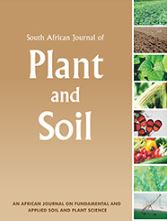Sweetpotato yield is adversely affected by poor soil fertility in Mozambique where access to inorganic fertilisers is lacking. The objective of the study was to evaluate the effectiveness of intercropping sweetpotato with groundnut and soybean at various phosphorus (P) fertilisation levels on the productivity of sweetpotato. A field experiment was conducted at Umbeluzi Research Station in southern Mozambique during the 2013/14, 2014/15 and 2015/16 growing seasons. The experimental design was a split plot with seven crop combinations and three P levels (0, 20 and 40 kg P ha(-1)). Phosphorus at 20 and 40 kg ha(-1) produced best total storage yield, total biomass and commercial root yields, whereas P at 40 kg ha(-1) favoured highest vegetative growth. Sweetpotato-groundnut intercropping produced the best commercial root yield and total biomass. Phosphorus applied at 40 kg ha(-1), combined with sweetpotato and groundnut intercropping, produced the highest total and commercial storage root yield but these two parameters were not significantly different from sweetpotato-groundnut intercropping at 20 kg P ha(-1). For farmers growing sweetpotato under similar climatic and soil conditions, we recommend intercropping with ground-nuts and additional application of 20 kg P ha(-1) for farmers with fertiliser access.
Improving productivity of orange-fleshed sweetpotato (Ipomoea batatas) through intercropping with legumes and moderate phosphorus application
Citation: Munda, E.; Pieterse, P.J.; Andrade, M.I.; Makunde, G.S.; Pereira, E.I. 2019. Improving productivity of orange-fleshed sweetpotato (Ipomoea batatas) through intercropping with legumes and moderate phosphorus application. South African Journal of Plant and Soil. ISSN 0257-1862. 36:3. pp. 221-228
2019-05-16
BIOFORTIFICATION, SWEETPOTATO AGRI-FOOD SYSTEMS, SWEETPOTATOES
journal_article

